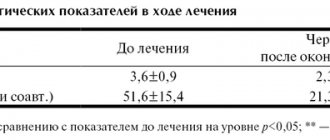Stuttering is a disturbance in the tempo, rhythm and fluency of speech associated with a pathological condition of the speech muscles. Expressed by frequent repetition of sounds or prolongation, speech interruptions. The causes are often stress, infections, mental retardation.
A speech defect leads to complex problems when interacting with peers, interferes with full communication, and causes considerable discomfort. Correcting the problem is possible in different ways, but with preschool children, the best option is a playful form. We invite you to learn about various exercises and replenish your didactic piggy bank.
Effectiveness of games for stuttering
For children under 7–8 years old, play is study, work, entertainment, simply put, the main form of perception of the world. While playing, the child expresses impressions and emotions from communication, the plots of books, and learns to build relationships with people.
In the case of stuttering, specially selected games and exercises give the following results:
- correct speech and behavior skills are consolidated in different life conditions;
- new speech skills are more easily transferred from the educational environment to life;
- the correct attitude towards oneself and others is formed.
In addition to speech training, classes help broaden your horizons, lift your spirits, and develop determination, organization, and intelligence.
Main signs of stuttering
Physically, children with stuttering are no different from their peers. Speech in a calm environment can be almost normal. And in moments of strong excitement, fear, rage, anxiety, the voice falters, stops, and letters, syllables, and words are repeated. The baby stretches out sounds and syllables.
Speech is generally irregular and uneven. In severe cases, the child cannot be understood.
The more the baby tries to say something, the more worried he is and the more pronounced the speech disorder is. Sometimes the pathology is accompanied by tightness in the chest, a feeling of spasm in the throat, and respiratory arrest. This condition can be described as convulsive: the tongue seems to stick to the hard palate, the lips close.
If the cause of stuttering is organic damage to the nervous system, then speech difficulties will be permanent.
For children, this condition is a huge stress. Because of fear, they try not to use words that are difficult to pronounce. Speech becomes clogged with parasites “uh”, “well”, “here”, “there”, “this”, “yes”, “so”. They communicate less and withdraw into themselves. In adolescence, this leads to complexes and serious psychological problems.
The problem is aggravated by nervous tics, enuresis, aggressiveness, tearfulness, and fear of the dark. Over time, psychosomatic diseases of the gastrointestinal tract, heart and blood vessels and other systems may appear.
Therefore, it is very important to contact doctors in time and start treatment.
Games and exercises for voice and pauses
The following complex will help develop the strength and purity of your voice:
- Sounds A and M. Inhale through the nose, pronounce sounds as you exhale;
- Combination of the sound M with vowels. First inhale, then on one exhale: MA, MO, MU, inhale again and another combination: MI, ME, WE. Repeat several times;
- N with vowels. Similar to the previous exercise;
- At one exit we pronounce ZZZZZZZZ - NNYNNNYN. In this case, Zh is the chest sound, Z is the middle sound, Hb is the upper facial sound;
- "True friend". Let the child imagine that his dog ran away. You need to call three times: once as if from afar, then - a little closer and at the end - very close;
- "Fragrance." Let the baby smell the scented handkerchief, and as he exhales say the word “good” - calmly, slowly, syllable by syllable. Then we make it more complicated: we say the phrases “very good”, “smells very tasty”. The same can be done with fruits, flowers and come up with any phrases to pronounce while exhaling;
- "Lullaby". Invite your baby to lull a baby doll, a doll, a soft toy and sing first quietly and then loudly “A-a-a-a-a”;
- "Hurts". We imagine that the tooth hurts and say “O-o-o-o”, alternating the loud and quiet version;
- "Cow". We imitate the moo of an animal, making MMMMMOOOO, varying the strength of the voice.
An always relevant and useful exercise for the development of vocal cords is alternating sounds. While exhaling smoothly after inhaling, we draw out the vowels in any order, for example, “aaaaaaaaaaaaaaaaaaaaaaaaaaaaaaaaaaaaaaaaaaaaaaaaaaaaaaaaaaaaaaaaaaaaaaaaaaaaaaaaaaaaaaaaaaaaaaaaaaaaaaaaaaaaaaaaaaaaaaaaaaaaaaaaaaaaaaaaaaaaaaaaaaaaaaaaaaaaaaaaaaaaaaaaaaaaaaaaaaaaaaaaaaaaaa.
Types of stuttering
There are several types of stuttering:
Depending on the mechanism of occurrence, pathology can be respiratory, vocal and articulatory-phonetic.
- With the respiratory or breathing type of speech delay, the pathology is associated with a lack of air. Because of this, the baby cannot finish a phrase or word while exhaling. During a conversation, his face becomes tense or distorted;
- Vocal stuttering is caused by involuntary closure of the vocal cords. Occurs most often with vowel sounds;
- The articulatory-phonetic form is characterized by spasm of the facial muscles. Outwardly, this is expressed by opening the mouth and contracting the lips.
Due to their occurrence, there are 2 forms:
- neurotic stuttering (logoneurosis) - associated with acute or chronic stress in children 2–6 years old, with no organic damage to the nervous system;
- a neurosis-like form occurs in children aged 2–3 years as a result of damage to the speech center of the brain due to injury or illness.
As you can see, stuttering most often begins in preschoolers. This is the most vulnerable age.
According to clinical manifestations there are:
- tonic form - hesitation, prolongation of sounds, pauses;
- clonic form - repetition;
- mixed form.
For the development of speech breathing
The following games and exercises are necessary to improve diaphragmatic breathing, correct breathing rate and development of the speech apparatus:
- “We breathe well.” The child lies down and places his hand on his upper abdomen. Attention is concentrated on the depth of breathing. We inhale and exhale and notice how the tummy rises and falls;
- "Burst tire." We spread it in front of us like a large tire. As you exhale, slowly say SHSHSHH, while crossing your arms: the right one should be placed on the left shoulder and vice versa. The chest contracts easily as you exhale;
- "Ball". Similar to the previous one, but as you exhale you need to say FFFF;
- "Bug". Your arms should be raised to the sides and slightly pulled back. As you exhale, say ZHZHZH, while lowering your arms;
- "Pendulum". We sit down cross-legged, hands on the back of our heads. First, take a calm breath, then pause for 3 seconds, then bend forward and exhale. When returning to the starting position, inhale;
- "Harvest". From a standing position, raise your arms straight up, as if taking apples from a tree, inhale and hold your breath for 3 seconds. Lower your arms, lean forward and exhale;
- "Harmonic". Starting position: standing straight, hands on your belt. Inhale, then pause for 3 seconds. Tilt to the left - exhale. Repeat on the other side;
- "We warm our hands." We suggest inhaling through your nose and exhaling smoothly through your mouth onto your hands, as if warming them.
For classes with several children, the “Teapot” exercise is suitable. Everyone should be given a jar with a narrow neck. At the signal phrase “Masha’s kettle is boiling,” the named student blows into the opening of the jar so that a whistle is produced. To do this, the exhalation must be very intense, with the lower lip touching the edge of the neck.
Treatment of stuttering in children
Getting rid of stuttering requires patience and persistence. It is important to follow the recommendations of a speech therapist in order to develop correct speech skills and eliminate pathology. But we also don’t recommend overdoing it: if your baby is sick or doesn’t feel well, postpone classes. In this state they will be of no use.
Treatment of stuttering in children is complex, using several therapy methods. Below we will talk about them in more detail.
Working with a speech therapist
Treatment of stuttering in children by a speech therapist can be carried out in a kindergarten, in a community clinic or in specialized institutions.
At the first stage, a speech therapist or speech pathologist conducts a survey and examination, identifying the cause of stuttering. Examinations are prescribed: MRI, electroencephalography or rheoencephalography. After this, an individual correction scheme is drawn up. Parents need to follow this plan to get rid of stuttering.
Working with a speech therapist is the key to successful correction. Even if you practice at home on your own, you need to regularly see a specialist. He evaluates the dynamics and, if necessary, adjusts the lesson plan or supplements them.
Working with a psychologist
To help get rid of stuttering, a psychologist or psychotherapist conducts classes in a playful way. The purpose of such activities is relaxation, distraction, and development of emotional stability. Both individual sessions and group work are possible.
When the cause of speech impairment is conflicts in the family, stuttering can be eliminated only by improving relationships within the family. In such cases, psychotherapy is also indicated for parents. It is necessary to create a calm environment and improve relationships between all family members. It is important that the child knows and feels that he is loved and appreciated.
Drug treatment
Drug treatment of stuttering in children is aimed at normalizing the neurological state and emotional background. Prescribe sedatives and drugs to relieve muscle spasms.
Usually vitamin complexes are also included in the treatment regimen. Folk remedies are also effective: herbal decoctions, baths, inhalations. Remember that any medicine is prescribed only by a neurologist, even herbal medicines. He takes into account the results of the examination and the cause of the child’s stuttering. Self-medication is fraught with worsening of the condition.
In complex cases, when there is damage to the central nervous system, hospital treatment or the prescription of other groups of drugs may be necessary.
Hardware techniques
Physiotherapeutic methods are used. Electrosleep and electrophoresis with sedatives are effective. You need to complete the course of treatment completely. Most often, several of these courses are prescribed, with breaks.
Computer programs have also been developed to help eliminate stuttering. Check with your speech therapist to see if they are appropriate for your situation. And remember that no program can replace comprehensive measures and independent work.
Speech therapy massage
Speech therapy massage plays an important role. It relaxes those muscles that tighten when pronouncing phrases and relieves spasms of the speech apparatus, thus helping to eliminate stuttering.
A therapeutic massage of individual parts of the body is also carried out: head, neck, shoulders, chest. Various techniques are used, including acupressure. In this case, the specialist influences the speech center through reflexogenic zones.
One of the advantages is the ability to perform at home. The first sessions are conducted by a specialist, showing the movements and correct placement of hands to the parents. In the future, the mother or other relatives perform the massage themselves. This is convenient when several courses of treatment are indicated.
Breathing exercises
The technique allows you to correct shallow, incorrect breathing and normalize the tone of the muscles involved in articulation. After classes, a preschooler masters diaphragmatic breathing, normalizes speech breathing, learns to regulate the respiratory rhythm and rate of speech, and strengthens the muscles of the anterior abdominal wall.
The specialist also teaches parents this technique so that they can perform the movements at home, since regularity of exercises and continuity of the course of therapy are important.
There are various techniques, for example, you can use Strelnikova’s exercises. They help create the correct air flow needed to pronounce words and phrases. The exercise complex is performed in various body positions, at rest and during movement. Gradually the tasks become more difficult.
You also need to train your voice. Logorhythmics classes are useful. You can get rid of stuttering by reading poetry out loud or singing it. You can even sign up for choral singing. This trains your voice and breathing.
At home, you can invite your child to blow soap bubbles, blow a cotton ball off the table, or blow up regular balloons. It is useful and fun to make boats and race to “drive” or blow them from one end of the basin to the other. Try practicing with toy wind instruments: pipes, trombone, saxophone.
Silent games
Such activities are good because they help relieve excessive excitability. In children with stuttering, this helps to remove the habit of rapid and incorrect speech and prepare the nervous system for more complex exercises. Patience and perseverance are cultivated.
Most effective games:
- "Watch". We put an hourglass in a prominent place and announce that the tongue is tired and needs to rest. While the sand is being poured, the baby is busy with drawing, puzzles and other things. Children prefer the collective version of the game, when the one who remains silent the longest wins;
- "Good Wizard" We imagine that there is a good and generous giant in the city, but now he is sleeping. Therefore, all people remain silent, no one speaks. But you can build houses from cubes, play with construction sets, and sculpt. It's also a great idea to silently draw a sleeping wizard. As an encouragement, you can present a “guard of honor” medal;
- "Theater". We suggest you “go” to a performance where you need to sit quietly and not talk. But you can show dolls or soft toys pictures. This exercise has many variations, for example, the library, where you also need to remain silent.
You can invent any options. The main conditions are maintaining silence and an exciting activity for the child, in which he can do without questions and answers for some time.
Causes
Among the causes of stuttering in children, predisposing and provoking factors are distinguished. Predisposing factors are disorders, most often of an organic nature, that a child has from birth. If provocateurs join them, then a child of preschool age or primary school age will develop a pathology.
Predisposing factors:
- heredity - the presence of speech disorders in close relatives, which may indicate weakness of the articulatory apparatus, muscles and ligaments, underdevelopment of the respiratory system, congenital anomaly;
- oxygen starvation in the prenatal period and during childbirth, caused by pathology on the part of the mother (anemia, diet, threat, polyhydramnios, oligohydramnios), placenta and umbilical cord (immature placenta, premature detachment, umbilical cord entanglement);
- prematurity, in which almost all systems are immature;
- birth trauma, especially if it is not diagnosed and the baby has not received treatment;
- Features of the nervous system - hyperexcitability.
The provoking factors are as follows:
- emotional shock - severe fright, fear, anger, first visit to kindergarten;
- chronic stress due to conflicts with peers, in children's groups, ridicule, lack of friends;
- unfavorable psychological background in the family, physical punishment, constant scandals, lack of attention from parents;
- overprotection, lack of personal space, inability to express one’s opinion due to adult pressure;
- excessive demands on the child from parents, educators, teachers;
- excessive passion for computer games;
- the presence of another person around the child who stutters;
- traumatic brain injury, even of a mild degree;
- previous meningitis, encephalitis, encephalopathy.
Games and exercises to develop speech tempo
The following tasks teach children to recognize fast and slow speech and vary their own tempo. We say at different speeds:
- vowels in any sequence: a-u-o-i-s;
- syllable rows with alternating soft and hard vowels (example: se-sy-su-sa, ze-zyu-zya-zi");
- "Tongue Twisters". For example, “The hedgehog has a hedgehog, the grass snake has a bite,” “The heron, standing on the porch, wrote the letter C.”
Children like fairy tales and tongue twisters and lift their spirits. Choose simpler ones at first, gradually increasing complexity.
Prevention of stuttering
Prevention consists of a set of measures aimed at eliminating risk factors:
- Formation of a favorable psychological background in the family, refusal of excessive guardianship, demands on the part of parents towards their child, care and a friendly attitude towards him. Remember that the basis of your actions should be love, and not the desire to make your baby a prodigy;
- Elimination of stress, emotional turmoil;
- Refusal of physical punishment;
- Developing the right daily routine for the whole family, and not just for the child;
- Complete and sufficient rest;
- A balanced diet with sufficient vitamins and microelements;
- Refusal to watch detective stories, horror films, science fiction films and programs. Instead, watch good cartoons, fairy tales and programs about nature and animals;
- Regular examinations by specialists;
- Treatment of concomitant pathology.
Tips for parents: how to treat stuttering in a child
Here are some more tips for parents to make the correction successful:
- Watch your speech - don’t burr, don’t stutter on purpose. Speak correctly, pronouncing sounds smoothly, without acceleration or deceleration;
- If there is a person with a speech disorder in the child’s environment, limit their communication if possible;
- Don’t scold your child for failures, don’t focus on them. It’s better to distract him with something: a game, drawing together. Ask him to help around the house - let him know that he is valued and needed;
- Don’t focus on speech development—direct your attention and that of your baby to other areas: physical activity, writing. Perhaps your child has some talents - help him discover them;
- But successes must be celebrated, but also without exaggeration. Don't overpraise your child;
- Remember that there are no perfect people in the world. Even many of the stars we admire and envy a little have disabilities or health problems. But this did not stop them from achieving success. Therefore, believe in your child and support him in everything. This will help him a lot;
- No matter how much you want to achieve results faster, do not overload your child with exercises and activities. Monitor his well-being, his disposition to exercise.
With timely treatment of stuttering in children and effort on the part of the child and his parents, according to various authors, the prognosis is favorable in 70–80% of cases or more. We wish you that your treatment is successful too.
To develop a sense of rhythm
Speech therapy rhythms involve motor exercises that pursue different goals.
Warm-up
Includes various marching to music with changing directions. Helps you get ready for future work.
Normalization of muscle tone
Suitable exercises: freely swing your arms back and forth, to the sides, alternating between tensing and relaxing your arms.
Rhythmization of movements
Walking, clapping and tapping to different musical tempos and rhythms, singing words and syllables are used. Example: clap the song “Cockerel, cockerel, golden comb.”
Effectively use active exercises accompanied by music and speaking of speech tasks. For example, students pronounce the text and accompany it with movements: “Above us is a tall oak tree (arms to the sides), above us are pine trees, spruce trees (tilts left and right), their heads rustled (clap).”
There are three degrees of stuttering:
- Mild - the child stutters only when he is excited or in a hurry to say something. He easily overcomes hesitations and is not ashamed of his stuttering.
- Average - the baby speaks easily and stutters little when he is calm and in a familiar environment. When excited, in public and in conversations with unfamiliar people, stuttering intensifies.
- Severe - the child constantly stutters, speech spasms are accompanied by accompanying movements (stepping from foot to foot, tilting or tilting the head, clenching fists, closing eyes, etc.).
Once it occurs, stuttering can become permanent, occur in waves (intensify or weaken, but do not disappear completely) or recur (completely disappear and then reappear after a sufficiently long period of free speech).
Expanding your vocal range
The following games for children who stutter help reinforce what they have learned and teach them to vary the intonation and timbre of their voice, which is very important for full speech:
- Count from 1 to 10 at different voice pitches;
- "Motor ship". To the sound U we pronounce the sound of the whistle of 3 ships: large, small and medium in any order;
- Say the phrase “I order you” with different intonations: angry, friendly, indifferent;
- 2 people participate. One says “I will punish you!” with a gradual increase in timbre, and the second says “No” with a decrease.
Any exercises where you need to select different intonation, volume, speed of speech and its emotional coloring are suitable.
Severity
When assessing the severity of the pathology, the severity of symptoms, their impact on the child’s communication with other people, and the presence of concomitant disorders are taken into account.
Highlight:
- mild degree - it is characterized by rare, unexpressed hesitations that do not interfere with talking and communicating. But even with this degree, parents need to contact a specialist in order to begin correction in a timely manner before the deviations become entrenched;
- medium - hesitations are more noticeable and make communication more difficult;
- severe - speech impairments are pronounced, they make communication almost impossible. Other symptoms also appear.
If stuttering is not eliminated, the cause of the pathology is not eliminated, then it gradually progresses, and very quickly.
What should parents do at home?
It is ineffective to cure logoneurosis without the help of parents at home, since the main support should come from them. Therefore, get ready for the fact that you will also have to contact a psychologist and learn from him. To correct psychological problems in a child, you need to change your daily routine and lifestyle at home. The best way to prevent stuttering is to avoid situations that make it worse.
Mode
Organize your daily routine so that periods of intellectual and emotional stress alternate with proper rest and relaxation.
Dream
Children must sleep at least 8 hours a day, so you need to organize your daily life, home space, and sound atmosphere in such a way as to ensure this minimum.
Intonation
The baby should feel the confidence and calmness coming from the parents, so you need to address him slowly, quietly, calmly, without interrupting him. It is important to explain to loved ones that this is exactly what needs to be done.
Praise
Develop your baby's self-confidence by praising him for any success. Create situations in which he could show his best side. However, praise for success should not be confused with pampering.
Situation
In family relationships, quarrels should remain prohibited. It is impossible to cure a child and prevent stuttering in an aggressive and tense atmosphere. The same applies to visiting noisy companies or places.
Leisure
Limit watching programs, movies, cartoons or games that cause emotional overstimulation. Leisure should be calm, aimed at developing creative abilities.
Communication
Gradually and delicately expand your child's social circle by inviting him to visit public places that do not evoke strong emotions. Introduce him to interesting people. They will help him adapt to the outside world.
Activity
Dosed physical activity has a positive effect on the nervous system, as well as muscle development. Therefore, physical education, swimming, running, just walking, playing in the fresh air should become the norm.
Restrictions
Under no circumstances use punishments that can have a negative impact on children's emotions (punishments should also be calm, no matter what offense the child commits). It is strictly forbidden to leave a child alone in a dark room.
How we work with stuttering
To successfully eliminate stuttering, it is necessary to identify its cause and, if possible, eliminate the factors that provoke and support this speech disorder. Therefore, it is necessary that the child receives consultation not only from a speech therapist, but also from a psychotherapist and psychologist. Based on the results of diagnosing the child’s current condition and the suspected causes of stuttering, various diagnostic and therapeutic measures are prescribed (for example, a Neurotest blood test, EEG, pathopsychological and neuropsychological diagnostics).
In the treatment of children suffering from neurotic stuttering, in addition to speech therapy sessions, psychological correction and psychotherapy are mandatory and basic. Various relaxation techniques, art therapy, sand and play therapy, MIM therapy, and group therapy are used. For neurosis-like stuttering, supportive drug therapy is prescribed.
At the reception, our specialists will create the most comfortable atmosphere for the child so that the classes are most effective. And using a combined therapeutic approach will allow you to achieve lasting results!
The specialist will also determine the need for family-parent consultations, help analyze family relationships and see something very important, something that cannot be seen while inside the family system.
Which doctor treats stuttering?
Speech therapist
If no physiological abnormalities are found in the child, the next step is to contact a speech therapist. This specialist specializes in the correction of speech defects and will help the child learn to correctly pronounce sounds that he cannot comprehend. The speech therapist will determine the nature of stuttering - it can be tonic (drawn-out main sounds) and clonic (stutter on consonants). And then he will choose the optimal treatment method.
- It will teach you to breathe evenly so that your breathing does not falter and remains even throughout the entire phrase.
- Place pauses to save speech effort and relieve muscle spasms.
- Form sounds using the speech apparatus: larynx, tongue, teeth, lips.
The specialist works to ensure that the baby overcomes the weakness of the articulatory (speech) apparatus. To do this, the speech therapist will develop certain muscles, for example, the larynx, neck.
Psychologist
However, in most cases, its work alone is not enough. The causes of stuttering are inextricably linked with psychological problems. They need to be corrected no less than speech. Therefore, we recommend that you also contact a psychologist. Visits to this specialist may be even more effective than visits to a speech therapist.
Muscle spasms are often associated with nervous tension and an inability to relax emotionally. Therefore, this doctor will work with a stuttering child in the following areas:
- Teaches you how to behave competently in stressful situations.
- Relax and rest.
- Control your emotions.
- Overcome your fears.
- Contact with peers.
- Express yourself through creativity and communication.
There are a huge variety of methods for psychologists to work with children who stutter. For kids, this may be the development of fine motor skills, for older children - listening to recordings of their own speech with its subsequent correction.
How to behave correctly for mothers and fathers of children suffering from stuttering?
- Reduce any emotional stress on the child. Protect your baby from listening to loud music, aggressive games, and watching TV for long periods of time.
- Get your child used to listening to calm classical music
- Play with your baby, read good fairy tales to him, tell him about all the positive emotions you received.
- · Monitor your child's rest. Follow the regime. Be sure to take walks, go into nature, do gymnastics
- Throughout the treatment of the pathology, it is important to provide the child with a friendly environment. You should not criticize or scold your baby if he still has a defect. On the contrary, it is important to encourage even the fact that the child has started treatment, is interested in it, and is not afraid to attend a speech therapist and other related classes.
How can you tell if your child has a speech disorder?
The easiest way to treat stuttering is when it is discovered at a very early stage, before the brain has yet “fixed” the speech defect, before it turns into a reflex and affects the child’s psyche. Therefore, when he turns 3-4 years old, we recommend paying attention to the following points:
- when pronouncing phrases, the child stops, breathes quickly, as if gathering strength;
- stammers, repeats the same syllables and words;
- pronounces additional sounds before the phrase (i, a, e);
- refuses to speak at all, becomes abruptly silent;
- becomes withdrawn.
Any of these symptoms is a reason to consult a doctor. The sooner you do this, the faster and without consequences the problem will be solved.
Forecast
Stuttering in children usually goes away completely if treatment and recreational therapy is organized correctly. Sometimes relapses may occur during school and puberty.
Of course, overcoming stuttering depends on many conditions, primarily on its mechanisms, on the timing of the onset of complex influence and the completeness of its application, as well as on the age of the child. If stuttering develops due to congenital complications or acquired as a result of previous illnesses, the prognosis is less favorable. In most cases, the prognosis for stuttering is favorable and social adaptation of stutterers is achieved to a fairly high degree.







